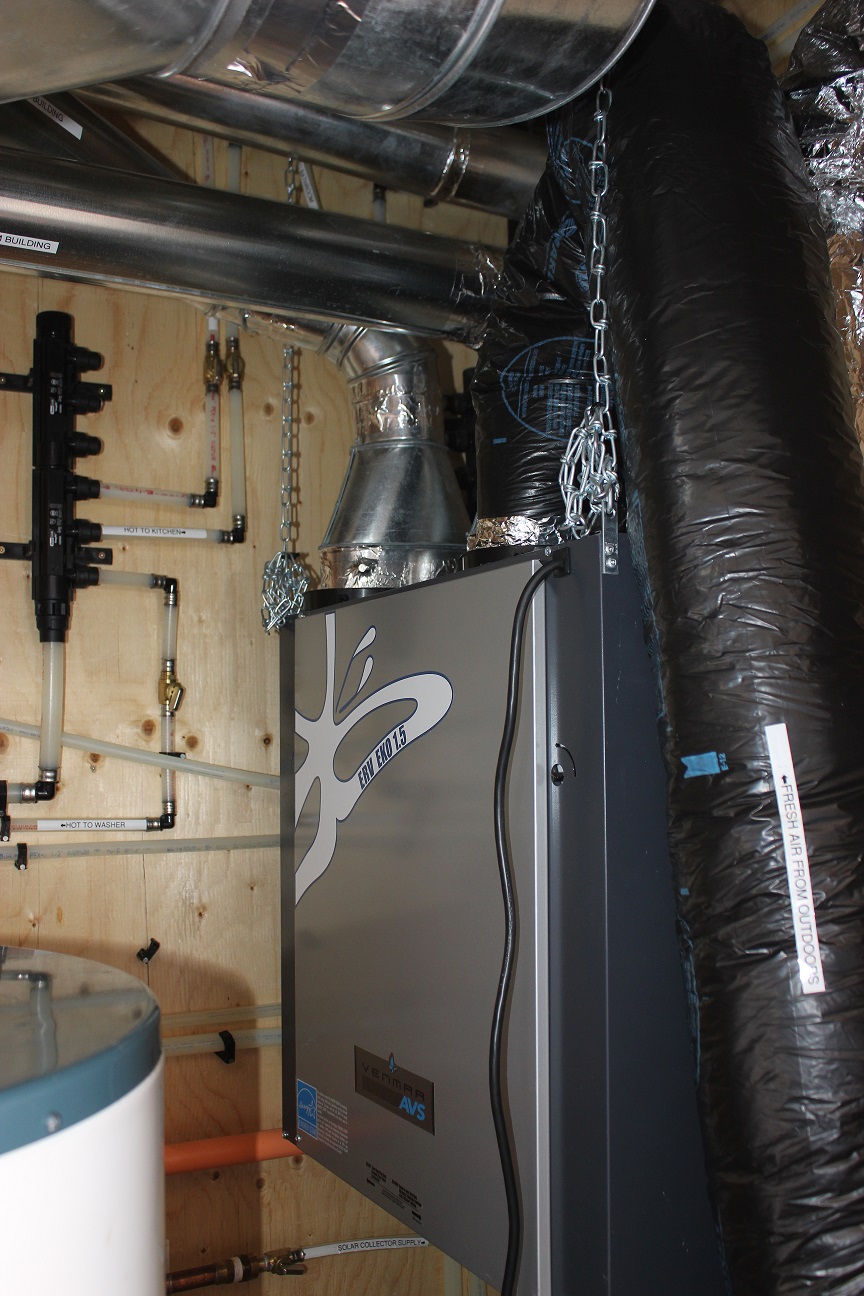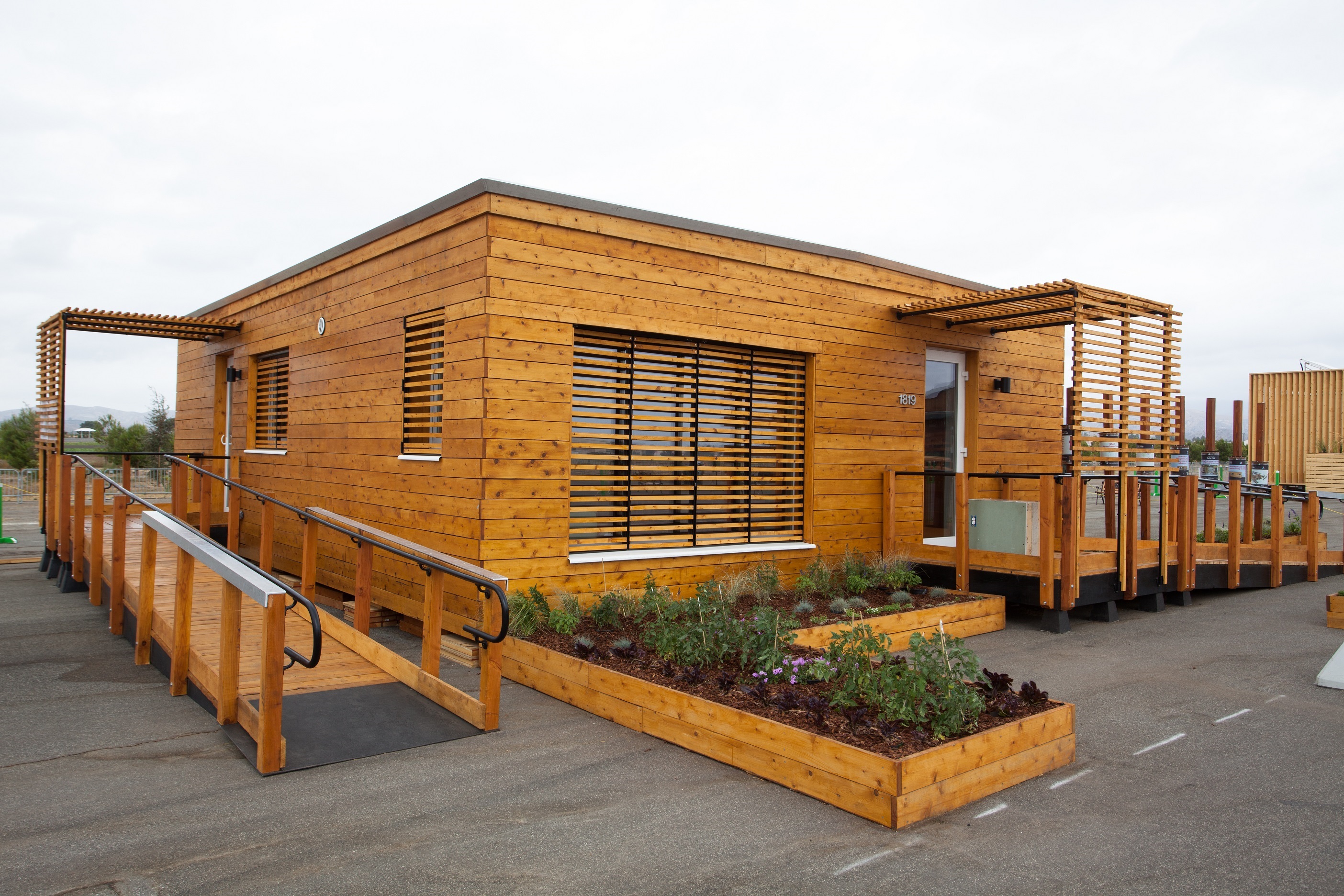Technology Spotlight: Energy-Recovery Ventilation Systems
Monday, August 18, 2014By Alexis Powers and Carol Laurie
Editor’s Note: This post is one of a series of technology spotlights that introduces common technologies used in U.S. Department of Energy Solar Decathlon team houses.
Good ventilation is vital for maintaining healthy indoor air quality. Houses built to modern energy efficiency standards, such as U.S. Department of Energy Solar Decathlon competition houses, are tightly constructed to allow very little outside air to leak in. As a result, odors, chemicals, particles, and humidity can become trapped, increasing indoor air pollution.
Energy-recovery ventilation systems provide tightly constructed houses with fresh air while minimizing energy loss. These systems rely on heat exchangers to efficiently transfer heat between indoor and outdoor air supplies. There are two types of energy-recovery ventilation systems: heat-recovery ventilators (HRVs) and energy-recovery (or enthalpy-recovery) ventilators (ERVs). An HRV uses fans to pull fresh air into a house while simultaneously exhausting stale air. In the winter, the heat exchanger transfers heat energy from the warmer outgoing air to the cooler incoming air to reduce the need for heating. In the summer, the system reduces the need to cool incoming fresh air by sending the cooler exhaust air past the warm intake stream. An ERV goes one step further by controlling indoor humidity as well as temperature. An ERV transfers water vapor along with heat energy to keep the interior humidity constant.
These ventilation systems can recover 70%–80% of the energy from a house’s outgoing air supply to help maintain a comfortable indoor environment.

Team Ontario used this energy recovery ventilator in its “ECHO” house. Energy recovery ventilation systems help maintain a comfortable indoor environment by recovering 70%–80% of the energy from the outgoing air supply. Credit: Carol Laurie, U.S. Department of Energy Solar Decathlon
Several Solar Decathlon 2013 teams incorporated energy recovery ventilation technologies into their competition houses. Norwich University provided continuous ventilation of its “Delta T-90” house by using a multiunit HRV system that was 92% efficient, ductless, and whisper-quiet. Team Ontario (Queen’s University, Carleton University, and Algonquin College), which received first place in the Solar Decathlon 2013 Engineering Contest, used an ERV in its “ECHO” house to dramatically reduce the energy needed to condition indoor air.

Norwich University used a multiunit HRV system that provided continuous ventilation in its Solar Decathlon 2013 “Delta T-90” house. Credit: Jason Flakes/U.S. Department of Energy Solar Decathlon
Visit the Energy Savers website to learn more about energy-efficient ventilation systems.
Alexis Powers and Carol Laurie are members of the U.S. Department of Energy Solar Decathlon communications team.
Tags: Engineering, Norwich, Solar Decathlon, Solar Decathlon 2013, Team Ontario, Technology Spotlights
